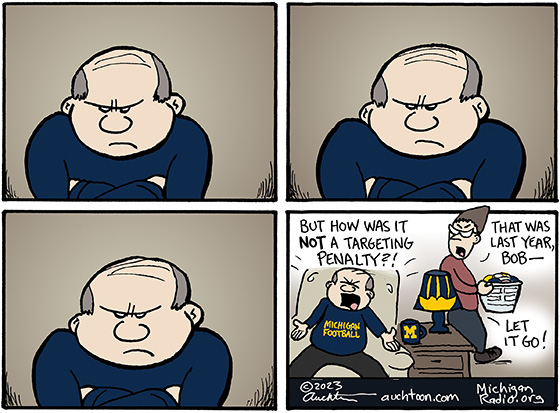But How Was It Not a Targeting Penalty?

Usually my goal as an editorial cartoonist is to create work with broad audience appeal. But every once in a while, there is a compelling reason to go after a niche. In this case, Michigan sports fans. Or more specifically, University of Michigan football fans who watched the Fiesta Bowl last Saturday.
It was an absurdly entertaining game. So much effort! So many mistakes! Exasperating swings in momentum and emotions. Why, it’s almost as if it had been played by a bunch of 20-year-olds!
Adding to the absurdity was the, shall we say, unsatisfactory quality of the officiating. None more critical than the no-call near the end of the game on a targeting penalty, followed by an extended review of the very definition of a targeting penalty, followed by the baffling conclusion that there was no targeting penalty.
It was frustrating for Michigan fans, to be sure, because it would have given the Wolverines one last desperate chance to win. But I think, more importantly, it was frustrating to anybody who cares about the health and well-being of those playing the game. Targeting rules have been developed to limit head and spine injuries, both during games and in the long term. When one player lowers his helmet to attack the head and neck of another player, the penalty needs to be called. Always.
Football is a violent game. That has been more than made clear with the bigger football story this past week, the on-field cardiac arrest of Buffalo Bills safety Damar Hamlin. Injuries will always be part of football. But they can be reduced by enforcing the rules.

